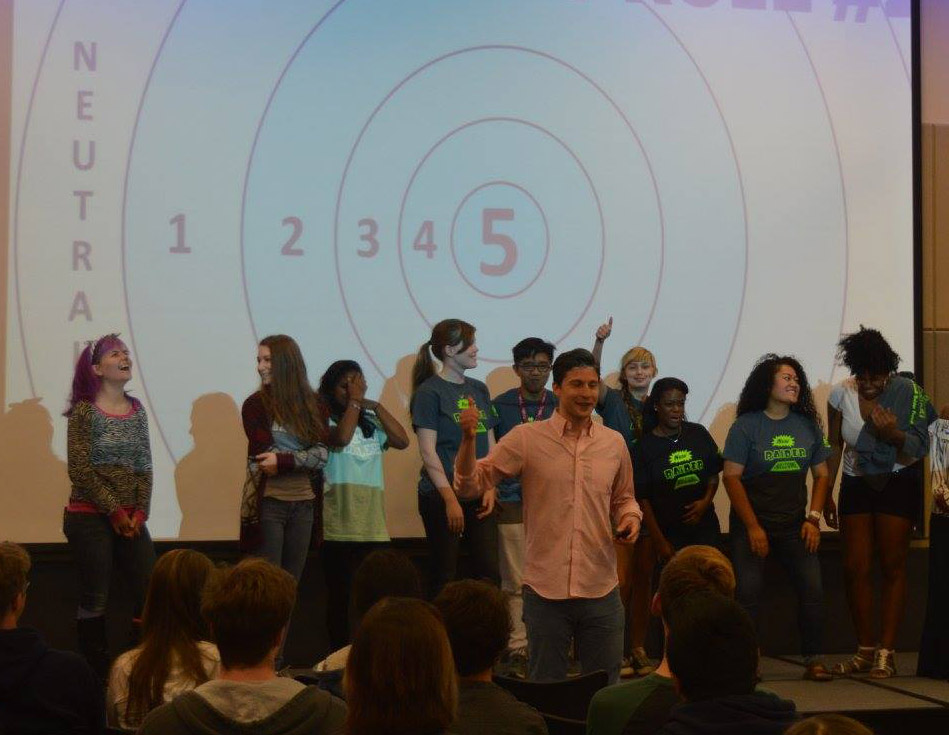One of my last presentations on the latest tour was at Wisconsin Green Bay. It was three hours or so, DFT 1, 2, and some technology blended in from the Secrets Behind Myspace and Facebook**.
A student came up afterwards and said that she had been discussing the day at their table and that they definitely “got it”. They got segmentation of engagement and meeting people where they are at and spatulas and blenders and megaphones and relationships facilitating engagement . . . but . . .she wanted to know:
“Does it really work?”
“It sounds good and all, but what do we actually do now?”
So she got all the concepts. She got the big picture, now she wanted the instruction manual.
DFT is big picture. It is a context piece, an experience that sets the various challenges and goals of educational engagement in a cohesive metaphor. This metaphor “frames” the possible actions – giving them clear relationships to each other.
In short, it’s “How to think about it.”
“What do I do now?” is applied learning. It’s where all the deep learning** takes place. Deep learning feels hard, because it is going from concept to action (opposed to shallow learning, which is action without concept: i.e. Teacher: “Do this.” Student: “O.K.”) Shallow learning feels easy, because thinking and experimenting aren’t necessary. Plus, and this is important, in shallow learning, if it doesn’t work, it’s the teacher’s fault. This protects the student from fear of failure, which prevents students from feeling the joy and power of getting over that fear.
So. What now, indeed:
A note to the Green Bay Max U foks:
I know that excitement without any traction on where to start quickly leads to frustration and this can lead to no action at all. That would be bad. In the interest of avoiding this, I’ll throw out a few application ideas and then all of you can weigh in with your ideas that will probably be better (because your excitement is what will actually get them done). Here’s a starter list:
1) Create a new group on campus that is responsible for doing 12 different blender activities. This would be a cross-group group, meaning it would collaborate and coordinate with many other groups to pull off the bigger events.
Start with name tag day. Then come up with a running list. Use google docs to collaboratively make plans with dates.
2) All the RA’s / community reps get together for a one hour work session to answer the big question: How can we introduce our folk to each other around common positive interests.
Discussions, in rounds:
a) What are the common interest categories? (i.e. TV shows (simple one), Board Games, Outdoor activities, Community Activities, etc.
b) How could we find out who likes what?
c) How could we help them organize themselves? How can we empower leaders of these topic interest groups? (Mozes.com would be an example of a way to empower the leader with a tool.)
d) How can we work with the flash mob people to get our interest leader folk to get involved in those when they come up?
3) For student government. Can we designate a couple of folks to be technology leaders to help the other students set up Facebook mobile to get pictures of student activities out into the Green Bay news feed?
4) Make it a ritual to have a quick meeting of leader folks attending / organizing events right at the beginning to coordinate spatula activities to help build relationships outside of normal cliques. (And help the neutrals who may not even have a clique yet.)
That’s the warm up – priming the pump – so to speak. Now it’s your turn Green Bay. Leave comments, how will you apply it? What action items do you want to play with?
P.S. Amazing job on setting up the Facebook Group so fast Mike!! That is a very quick application!
P.P.S. Great application from NACA:

